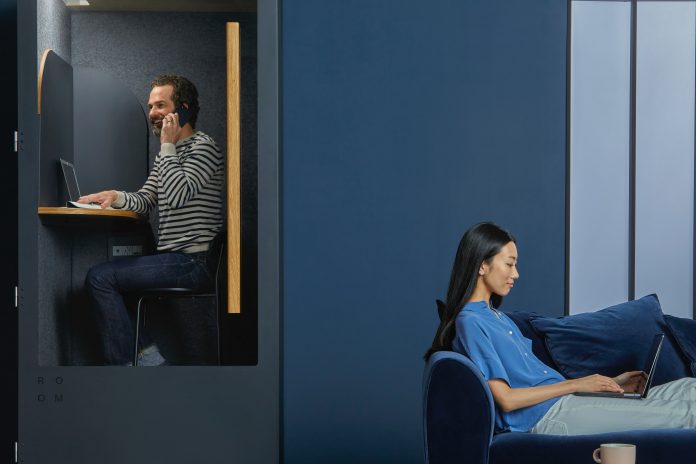As technology progresses, the video calling became the next best thing after the face to face meeting, yet it has not always had the Best Call Quality.
Video calling is used for personal and business calls because it works so well.
Specialists work tremendously on various apps on the market so that we have the best user experience and high-quality calls regardless of the distance.
The business environment is highly fluid, and professionals seek more efficient and fast communication with remote teams or business partners.
Nowadays, it has never been easier to stay in touch with an old friend living thousands of miles away. Everything is interconnected, and everybody requires one thing: high-quality experience.
There are various apps on the market that target various consumer needs.
Some apps specialized in personal video calls.
They offer clear voice and quality video, integrated messaging, and ways to make conversation more fun and engaging.
We can settle for less if the app offers other features that improve the overall experience. However, in a business video meeting, the call quality can make or break the deal.
Both partners need crystal clear high definition video and audio in addition to other features like file or desktop sharing, call recording or group conferencing.
They are a few factors that impact the video call quality.
Some factors are technical, and you may need a specialist to fix the issue.
Others are simple fixes you can do it yourself to improve the overall video call experience.
Why do you have Bad Call Quality ?
How can you access Full HD Video Calls ?
Technical factors that impact the video call quality
Bandwidth
Video call app needs a high-speed internet connection to provide high definition audio and video.
Mobile apps offer better quality over WIFI rather than data network.
Also, if your bandwidth us shared by multiple users, make sure you don’t schedule an important business call in peak hours.
Desktop apps use ethernet rather than WIFI to increase the voice and video quality.
There are also systems called DIA, Dedicated Internet Access, that can be set up in your office and guarantee bidirectional bandwidth for calls.
Some apps have silence suppression mechanisms.
This means they don’t transfer any data from the person that listens silently in a two-way conversation, thus reducing the necessary bandwidth.
Equipment
The performance of your computer and camera can profoundly influence the quality of your calls.
In addition to this, you need performant routers, modems, and firewalls as an integrated communication system for high definition audio and video calls.
EVS-compatible phones offer the ultimate in voice quality.
Video and audio need to be synchronized, and your equipment needs to have functional echo cancelation mechanisms.
Compression codecs used
All video call apps transmit data packs, meaning audio and video, in a compressed form so that the transmitted load is light.
This compression software is called codecs.
They are also used to decompress data at the other end.
The higher the compression, the lesser the data size transmitted, but the quality suffers from this high compression.
If you use video calling for business purposes and you need high definition voice and video, look for apps that use HD Codecs.
For example, FaceTime, WhatsApp, Skype use HD codecs for both audio and video.
Latency
The compressed data pack travels long distances across a various number of router hops.
The higher the distance and the higher number of hops, the more the delay.
However, choose a video call solution that does not have more than 250 – 300ms delay, especially for business conferencing.
Jitter
The codecs compress the data and send it to the receiver in packs.
The decompression algorithm expects to arrive with equal spacing between them and in the right order.
However, due to network delays, the packs may arrive at different time intervals and not in the same order.
There is a small jitter buffer at the receiving end and a delay so that the decompression algorithm to rearrange the packs and place an equal spacing between them before decompressing.
High tech video call apps available on the market can do all these procedures without the user, even noticing.
Packet loss
A few data packets are always lost over the network due to collisions, overloaded links,and other errors.
Codecs compensate for the lost data and makes it invisible to the users.
Good voice call apps manage to compensate up to 5% of the packet losses without the user, even noticing any difference in the call quality.
When losses are more than 5% there is noticeable lower quality of video or voice and delays.
Apart from this technical information, there are other simple tips and tricks you can use to improve the quality of your video call.
Simple Fixes to improve the quality of your video call
Update your video call app
Make sure you take advantage of the latest improvements in your video call app.
Specialists constant develop new and efficient compression ways to maintain high quality or solve other issues that impact user experience.
Wear headphones
Echos in audio can be caused by the fact that the speakers of the other party are too loud.
Good quality headphones solve this issue and improve the overall calling experience.
Adjust your light.
Increase the lighting that falls directly on your face and decrease the one behind you.
Lighting can make a difference between talking to a real person and not a blurry silhouette.
Stationary background
The more motion is around you; the harder is for the video app to decompress the data it sends to the other party correctly.
A static background will significantly improve the quality of your call.
Overloaded internet
All video call apps use a quite large amount of the bandwidth.
Close all unnecessary programs and refrain from watching videos or downloading files during the video call.
Adjust your webcam’s video settings
Make sure you have a high performance camera and adjust it to the environment.
Cameras allow you to adapt brightness, contrast, volume, and use other settings to have the best video.
The quality of the video call is highly essential for both personal and professional purposes.
Often simple fixes still don’t get you the quality you need.
Get a professional diagnosis of the overall system to fix it.





